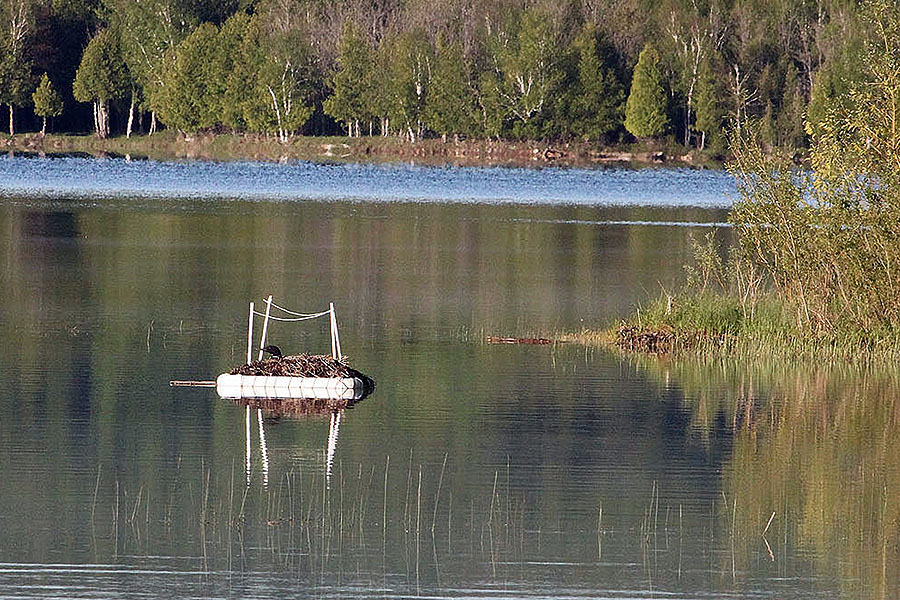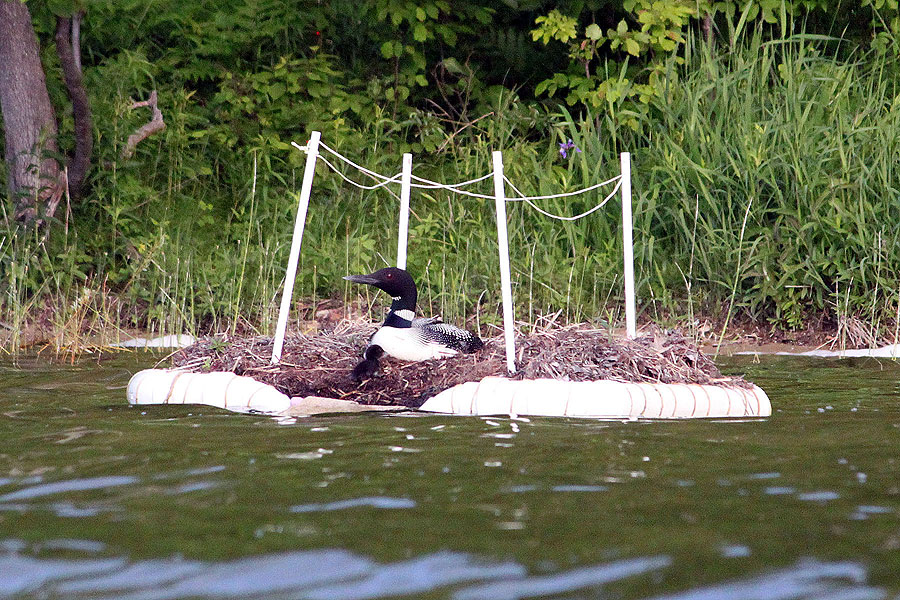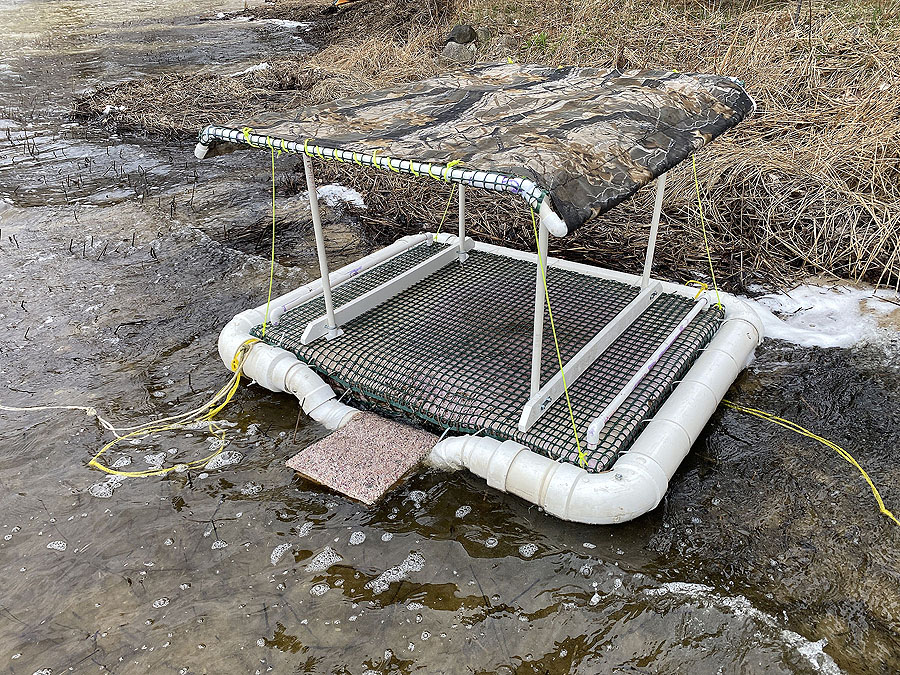|
ANP?
Mar 12, 2022 by Gene Klco
What
is an ANP and why do I use it? An ANP stands for Artificial Nesting Platform
(Sometimes called an ANI – Artificial Nesting Island). Loons will not nest on land
as they are concerned about predators. They nest on islands – either natural or
man made - away from shore.

Natural 'Island'
|
When a natural island is not available on a lake, ANPs allow loons to nest on
that lake. Also, it is notable that loons are territorial. There can only be
one nest on a roundish lake of medium size. On an irregular lake that has
coves, more than one nest could be possible. So it is possible to have both
natural and artificial nests on a lake.
The lake our cottage is on in Northern Michigan has no
natural islands on it. So I decided to build an ANP in 2011. It took a couple
years for me to locate it in the proper place on the lake (sheltered from the
prevailing winds). These photos show the ANP I made as featured it Loon Chick’s First Flight.
|
xxxx 
|
xxxxx |
The base is made of 4” PVC pipe with a little step down in
front to allow the loons easier access to the nest (although, they often climb
up the back). In the center is 4” of Styrofoam surrounded by plastic fencing
that is zip tied to the PVC pipes. The 4 small plastic pipes and rope are
‘eagle guards’. Eagles won’t swoop down to grab an egg or chick because their
wingspan is too large to fit between the pipes.
In 2021 I modified the nest, by adding a canopy to it. I used
1” PVC piping to make a frame for the canopy and stretched a nylon mesh fabric
over it. Nylon ropes on the four corners hold the canopy in place to prevent a
strong wind from blowing it off.
|
xxxx
|
xXXxX |
|
The first photo shows the bare ANP with the second one
showing it with dead reeds on it that I use as nesting material. It’s not
fancy, but the loons seem to be happy with it. They canopy serves to provide
them shade when they sit for hours in the spring sun. I try to put the nest out
as soon as the ice comes off the lake (mid-April) and keep it out till the 4th
of July. They usually don’t get on it right away. I think they are just waiting
to see if it will be there before they go about the business of making eggs.
Most of the eggs have hatched in early June throughout the years. Once in awhile they
will get back on the nest with the chick(s) on a windy day, for instance. But
they are always off for good by July,
Next blog I’ll tell about the buoys I use.
 XX XX 
|







